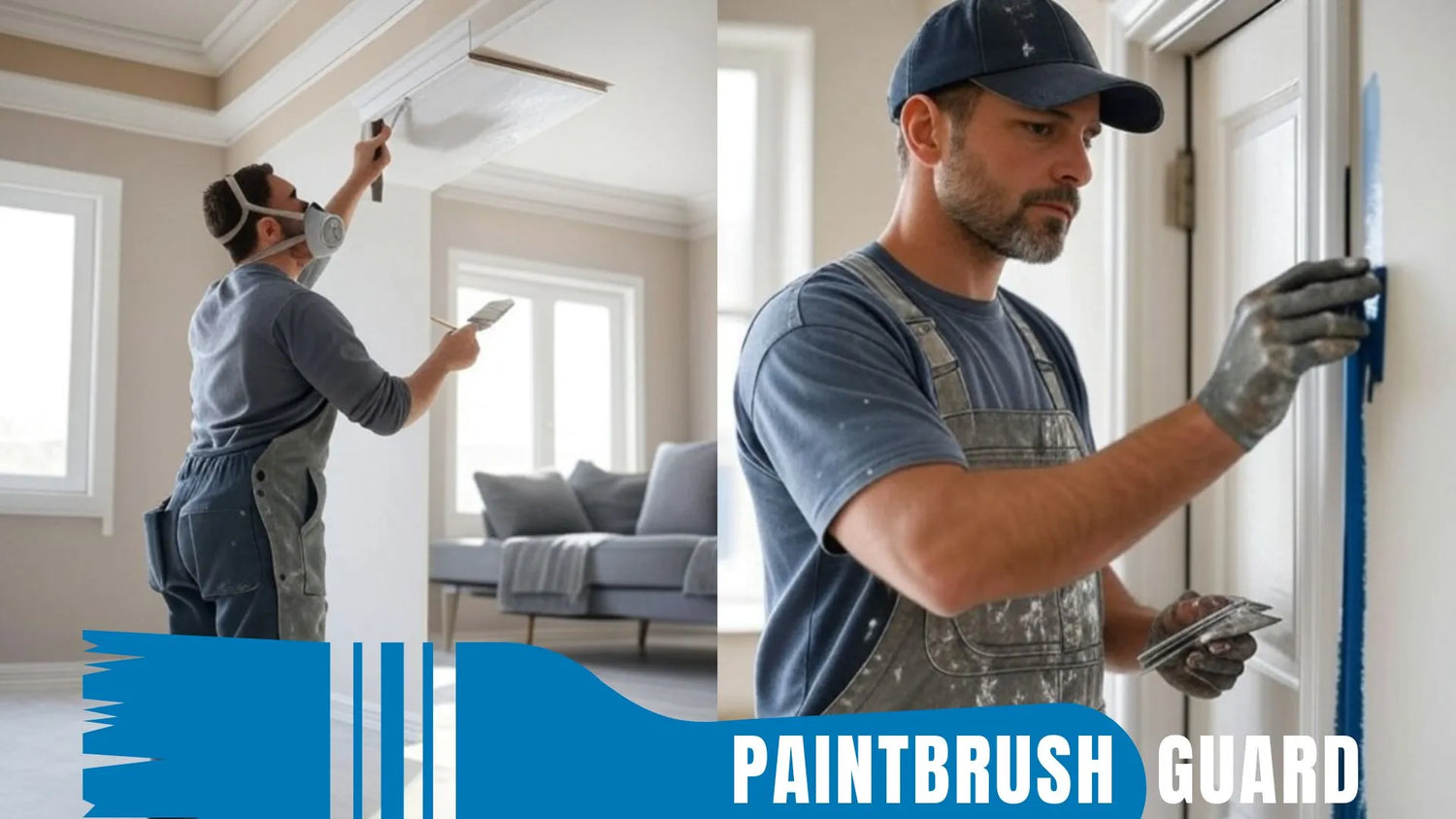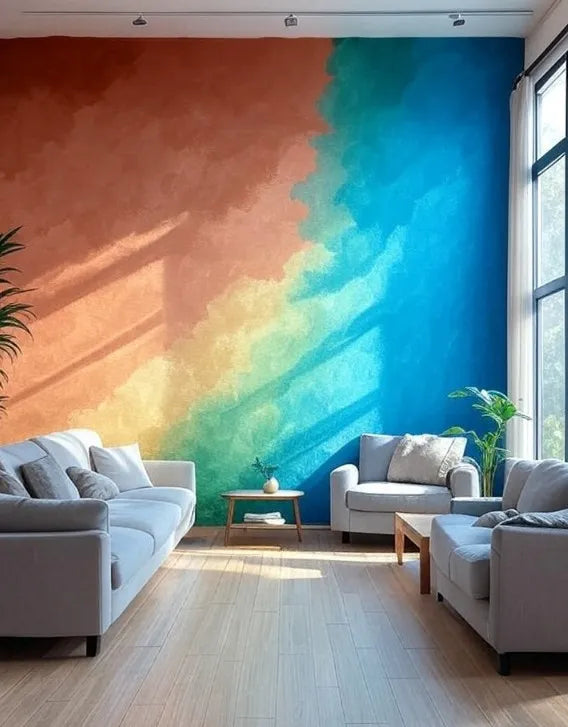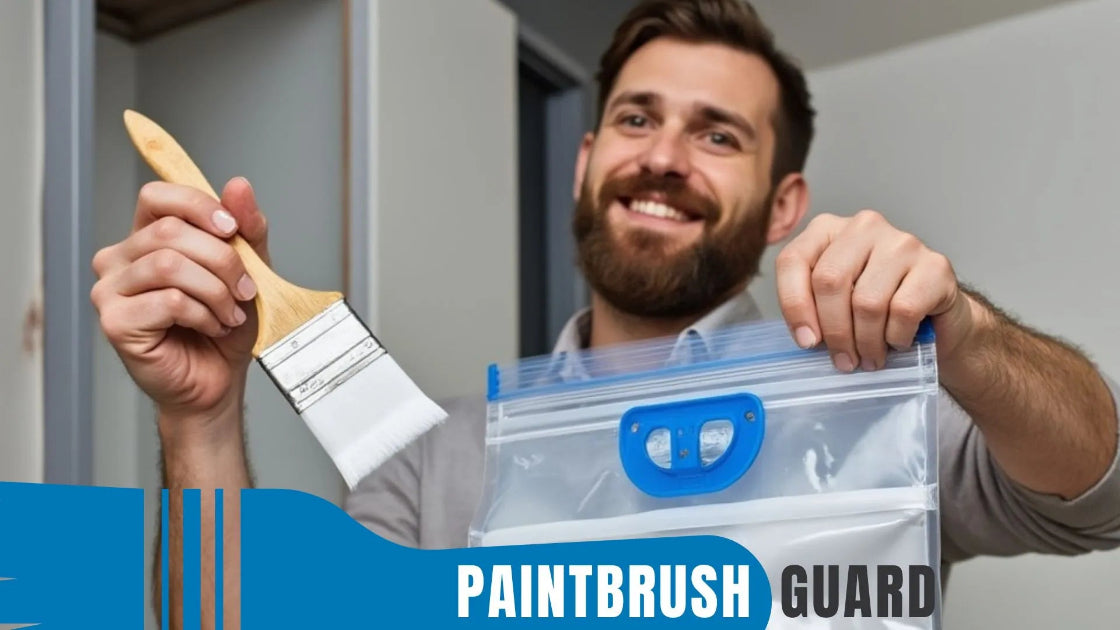
Does Painting Your House Black Make It Hotter? The Science, Pros, Cons and 5 Cooling Hacks
|
Time to read 8 min
|
Time to read 8 min
Does Painting Your House Black Make It Hotter? Yes, black does pull in more heat, but it is not the scorcher myth makes it out to be, especially if you play smart. At Paintbrush Guard, we dig into these curb appeal conundrums with a green twist, helping you blend style and smarts so your home feels as good as it looks.
Why care? Beyond the wow factor, color choices tweak your energy footprint, comfort levels, and even resale pop. In hot spots like Texas or Arizona, that extra warmth could nudge bills up a notch, but in cooler climes, it cozies things just fine.
Stick with me as we unpack the real science on does painting your house black make it hotter, weigh the ups and downs, and roll out five game changing cooling hacks. From reflective wizardry to nature nods, these keep your black beauty chill without compromise.
Discover how to clean paint brushes fast with simple, mess-free methods that save time and extend brush life. From quick rinses to innovative storage hacks.
Colors are not just eye candy; they play heat tag with the sun in sneaky ways. At its core, this boils down to absorption versus reflection.
Black, being the ultimate sun sponge, soaks up 90 to 95 percent of incoming rays, turning that light into warmth that radiates back out or seeps inward. Lighter shades, say a crisp white, bounce back 80 percent or more, keeping things breezy.
Studies show black exteriors can crank surface temps 8 to 10 degrees Celsius higher than pale pals on a scorcher day. That is the siding sizzling, not your living room turning oven. Indoors? The bump lands milder, around 2 to 5 degrees Fahrenheit warmer, thanks to walls and insulation acting as buffers.
Dark does not "hold" heat longer; it just grabs and gives it quicker, heating fast in sun and cooling swift at dusk. Flip to winter, and black shines as a passive warmer, slashing heating needs by absorbing solar gain to cozy up the place. Energy reports flag a 2 percent AC hike in sweltering zones for dark homes, but pair it with smart builds, and that dips near zero.
It is physics with personality: Dark amps drama but demands balance. Tie this to eco painting, and you see how choices like low VOC blacks from our shop at PaintbrushGuard.com keep the planet in the loop too.
Black packs punch, no doubt, but like any star, it has its shine and shadows. Let us tally the tally.
On the plus side, that deep hue hides dirt and scuffs like a pro, meaning less scrubbing and longer between refreshes. Style wise, it delivers timeless edge, boosting curb appeal and home value in trendy neighborhoods.
Come chilly months, black's heat hug cuts heating bills by up to 10 percent, a cozy win for energy wallets. And sustainability? Opt for durable formulas, and you trim repaint cycles, easing manufacturing footprints.
Flip the coin, and summer sizzle steals the show. Black can amp AC runs in hot climates, potentially hiking costs 5 to 10 percent if unmitigated. Fading hits quicker too, with UV rays baking the pigment flaky in a year or two versus five for lights.
Vinyl siding? Watch for melt risks from that extra toast. Overall, black thrives with insulation upgrades, turning cons into calculated quirks. At Paintbrush Guard, we nudge toward greens that pair bold with balanced, like our eco line for fade fighters.
Nailing a black exterior starts with the right kit, no shortcuts. Prime with a stain blocking formula to lock in old colors and dodge bleed through. Grab paints rated for exteriors, low sheen to cut glare, and toss in UV blockers for longevity.
Tools wise, stock durable brushes that hold edges sharp, plus rollers for broad swaths. For that flawless finish, the Paintbrush Guard Vacuum Storage Bag is clutch: Wipe excess mid job, seal in freshness, and resume without crusty tips or waste. It saves seconds per coat, keeping your black crisp and even.
Prep the surface too: Power wash grime, sand rough spots, and caulk cracks to seal heat paths. Work in shade for true color reads, and layer thin for build without runs. With these, your black goes from risky to radiant.
From understanding your home’s architecture to testing shades, this guide covers everything you need to know to get it right.
Ditch standard black for versions laced with infrared reflectors that bounce rays while keeping the hue deep. Total setup: Pick and paint as usual.
Perks: Drops surface temps 13 degrees Celsius below plain black, slashing AC by 20 to 30 percent yearly.
Drawbacks: Pricier upfront, about 20 percent more. Snag to dodge: Skipping primer lets pigments clump. A Texas homeowner shared, "My black stayed 10 degrees cooler inside; bills dipped noticeable.
Layer up walls and roof to trap exterior blaze before it sneaks in. Estimated savings: 50 percent less interior rise.
Perks: Continuous insulation blocks 96 percent of heat load, keeping indoors steady even on black sided homes.
Drawbacks: Labor if retrofitting. Avoid over venting, which pulls conditioned air. "Added foam to my dark ranch; summers feel like spring now," raved a Midwest fixer.
Picture cross section: Black wall with insulation layers, heat arrows stopping cold.
In this guide, we’ll explore why sage green is a top choice, how to select the perfect shade, application tips, and complementary color pairings to achieve a stunning exterior.
Let plants play defense, draping shade to cut direct hits. Quick ROI: 15 to 25 percent cooling edge.
Perks: Trees slash solar load by 30 percent, mimicking awnings on a budget.
Drawbacks: Wait time for maturity. Pick non invasive to dodge overgrowth. One California couple noted, "Our black adobe got leafy armor; no more midday toast."
Envision before after: Bare black wall baking, then shaded oasis.
Mix shades to diffuse the dark without ditching the drama. Visual savings: Even heat spread.
Perks: Lighter bits reflect enough to temper overall absorb, easing bills by 5 to 10 percent.
Drawbacks: Design tweaks needed. Skip clashing tones that date quick. "Gray trim on my black Victorian? Total game changer for comfort," said a design dabbler.
Even coats mean smoother surfaces that shed heat better; our bag ensures pro precision. Time saver: 30 seconds per pause.
Click on this link to find house painting guides and innovative tools to help you with your home improvement painting project.
Black beauties demand a little TLC to thrive. Schedule annual walks with a soft brush and mild soap to fend off mildew, which loves that warmth. Top with UV guard sealants every few years to fight fade, keeping your hue punchy.
Grab an infrared thermometer to spot hot zones early, tweaking shades or vents as needed. In sunny belts, team with solar shades or panels for net zero gains.
Pros shine for big jobs, ensuring codes and climates align. Eco wise, our low impact paints at PaintbrushGuard.com pair perfect, turning your black into a beacon of balanced living.
Discover how house paint colors influence mood & get expert tips on choosing the best colors for every room to create a vibrant, harmonious home environment.
So, does painting your house black make it hotter? Short answer: A bit on the surface, sure, but inside? Manageable with these hacks that blend bold and breezy. From reflective magic to leafy layers, you can claim that sleek look without the sweat, saving energy and style points along the way.
Go on, embrace the edge if it sparks joy; just layer in the smarts. Ready to roll that black without the burn? Gear up with Paintbrush Guard tools at paintbrushguard.com and paint smarter, live cooler. What color calls to you? Drop it in comments; let us chat visions.
Surface yes, but interiors see just 2 to 5 degrees Fahrenheit more with good insulation buffering the blaze.
Heat reflective blacks with ceramic bits drop temps 13 degrees Celsius, cutting AC needs 20 to 30 percent.
Exteriors run 8 to 10 degrees Celsius hotter than lights, but hacks like vents halve the indoor feel.
Absolutely, absorbing solar gain to trim heating by up to 10 percent in cold snaps.
Insulation boosts block 96 percent of heat transfer, keeping your cool no matter the shade.
Trees and vines slash solar load 30 percent, nature's free shade squad.

Learn about eco-friendly painting, tips and tutorials on house interior and exterior surfaces, so you can get started with your project without any surprices during or after your painting.

Learn how interior house paint colors influence mood with expert tips on room preference so you can pick the best colors for a harmonious home environment.
We focus on the most popular shades for each interior colors, so you don't miss no matter what color you pick.

Learn how this innovative tool allows you to store paintbrushes without the need for immediate cleaning, offering significant advantages in time savings, water conservation, reduced chemical pollution, and lower costs for supplies.


